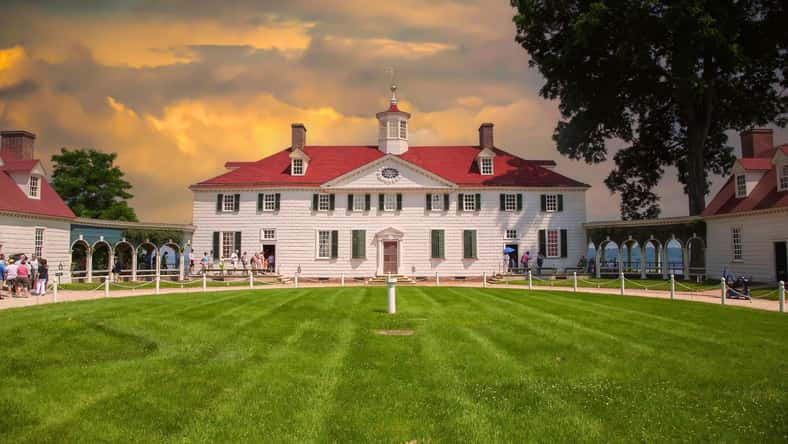During A $40 Million Restoration Project At George Washington’s Mansion, Artifacts From The 1700s Were Unearthed For The First Time Since Before The Revolutionary War

A dig at George Washington’s mansion has unearthed a collection of artifacts from the 1700s. Remarkably, they have remained buried since the days before the Revolutionary War. It has been described as a “blockbuster discovery.”
The mansion of the first president of the United States is located in Virginia, about 15 miles south of Washington, D.C. During a $40 million restoration project of the mansion, researchers discovered 35 glass bottles from the 18th century in the cellar.
The bottles were found across five storage pits, and 29 of them were still intact. They contained preserved fruits, including gooseberries, cherries, and currants, that are likely 250 years old.
The assortment of bottles was uncovered following the discovery of two intact glass bottles from the 18th century containing cherries, pits, and liquid.
“To our knowledge, this is an unprecedented find, and nothing of this scale and significance has ever been excavated in North America,” Doug Bradburn, the president and CEO of the historic Mount Vernon estate, said.
“We now possess a bounty of artifacts and matter to analyze that may provide a powerful glimpse into the origins of our nation, and we are crossing our fingers that the cherry pits discovered will be viable for future germination. It’s so appropriate that these bottles have been unearthed shortly before the 250th anniversary of the United States.”
The contents of the glass bottles were carefully removed and are currently being kept in refrigeration. Scientists plan to study them more closely for further information. Once the bottles are dried, they will be sent away for conservation.
After performing an analysis on a small sample, researchers found 54 cherry pits and 23 stems. The stems had been cut with precision and were left on before the cherries were bottled. Researchers believe the pits are ripe enough for DNA extraction and possibly even germination.
“These artifacts likely haven’t seen the light of day since before the American Revolution, perhaps forgotten when George Washington departed Mount Vernon to take command of the Continental Army. This means the bottles are extremely fragile and require the utmost care,” said Bradburn.

Bob – stock.adobe.com – illustrative purposes only
The glass bottles and the fruit found inside of them provide some insight into life at the estate and in 18th-century America. For most of his life, Washington lived at the Virginia estate.
In 1754, he took over management of the property and slowly expanded the home. Hundreds of enslaved people were relied upon to keep Mount Vernon running.
“The bottles and contents are a testament to the knowledge and skill of the enslaved people who managed the food preparations from tree to table, including Doll, the cook brought to Mount Vernon by Martha Washington in 1759 and charged with oversight of the estate’s kitchen,” said Mount Vernon officials.
The findings also gave experts a clearer idea of what plantations and the overall environment were like in the 18th century, as well as what foods are at the root of American cuisine.
Sign up for Chip Chick’s newsletter and get stories like this delivered to your inbox.
More About:News